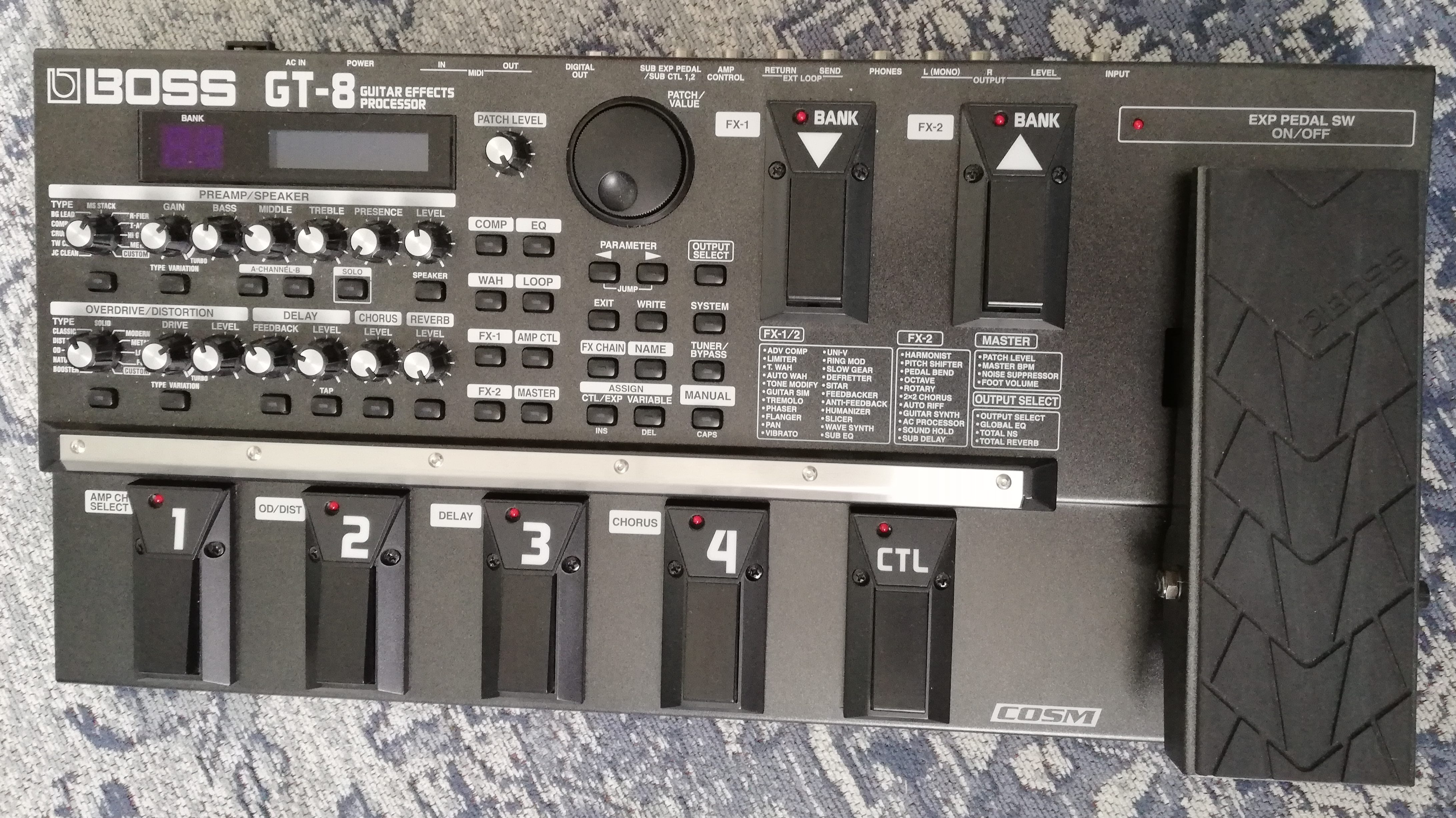
I had written a whole post about how I didn’t really like the direct signal from the Boss GT-8, but that was until I tried the S/PDIF digital output. It changed my mind completely.
I initially bought the GT-8 because there were a few people in favor of its analog circuitry, describing it as one of the few processors that doesn’t sound “digital’. The units interface is laid out more like a series of stompboxes. You get an individual parameter for important controls like reverb, delay, chorus etc. It’s a different approach to setting everything from within the display screen, like most of today’s processors seem to be in favor of. I find the GT-8 very quick for making adjustments as apposed to first finding the setting I’m looking for by scrolling through a bunch of menus.
Another nice feature that Boss removed later down the line is the swivel wheel control. The main dial that lets you scroll through all of your presets. It’s similar to what you would normally see on a keyboard.
I spent a lot of time playing through the GT-8 many years ago through my Marshal JCM2000. The factory presets sounded great then, and still do now. I only have to make a few minor tweaks to achieve the sound I’m after.
Using the 1/4” outputs as a line signal proved to be troublesome. I believe this is due to impedance mismatch and is solved easily by using a good quality DI box such as the Radial JDI with Jensen transformers.
My most recent discovery is the S/PDIF output direct to my Focusrite Saffire Pro 14. It sounds great, and you only need to deal with a single cable for a stereo signal. No impedance or gain staging hassles. Apparently it’s also the GT-8’s highest quality output, but that’s based on what I’ve read. This setup can be a bit tricky to get right as digital signals are picky about the cables they travel over. I will be dedicating a new post to setting this up shortly, so make sure you’re subscribed.
In conclusion, the GT-8 will provide great value and can be picked up used for next to nothing. It’s an alternative to transporting large amounts of gear, and really fun for those that enjoy tweaking. You should look to pay around $250 . A lot of them are sold in poor condition, so make sure you’ve viewed photos before purchasing.
Because the GT-8 is so popular, there are also a number of resources that can help you tweak:
Boss GT-8 Brilliance (a collection of tips)
Michael Casswell – Ultimate Gear Guides: Roland Boss GT-8 (split into multiple parts and 2 disks)

Looking forward to your next Boss GT-8 posts! I have one and I’m looking to set it up for both live play and home recording.
I’ve had the GT-8 model for some time and find some of the settings suitable for recording. I thought it was bullet-proof but the unit has nw developed a faulty display. At first glance I thought had reverted to a different language. Not so. Certain letters have been replaced with others and the patches appear as gobbledegook! I have always treated the unit carefully. Any suggestions. PS the reset doesn’t appear to make any difference.
Sounds like water damage